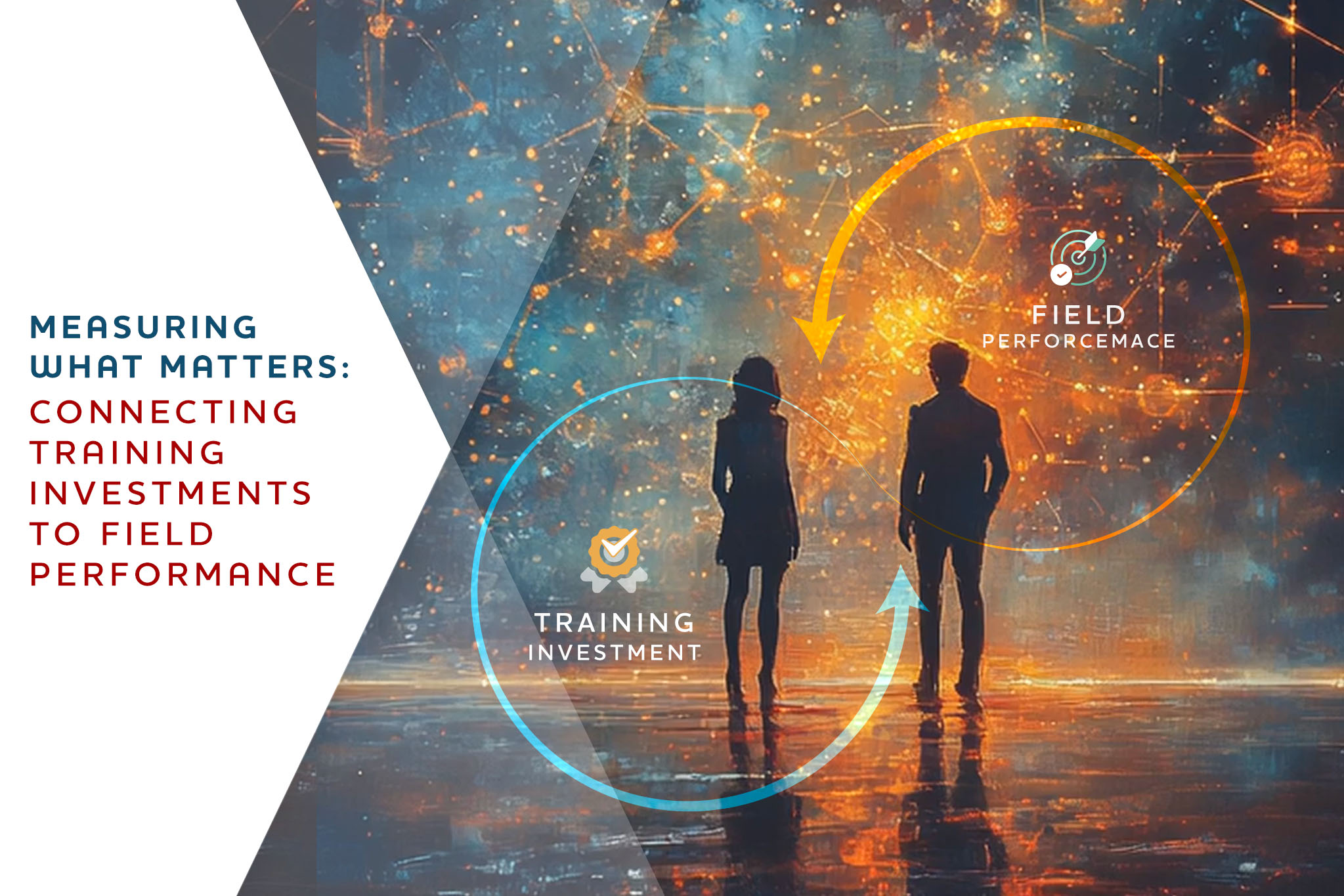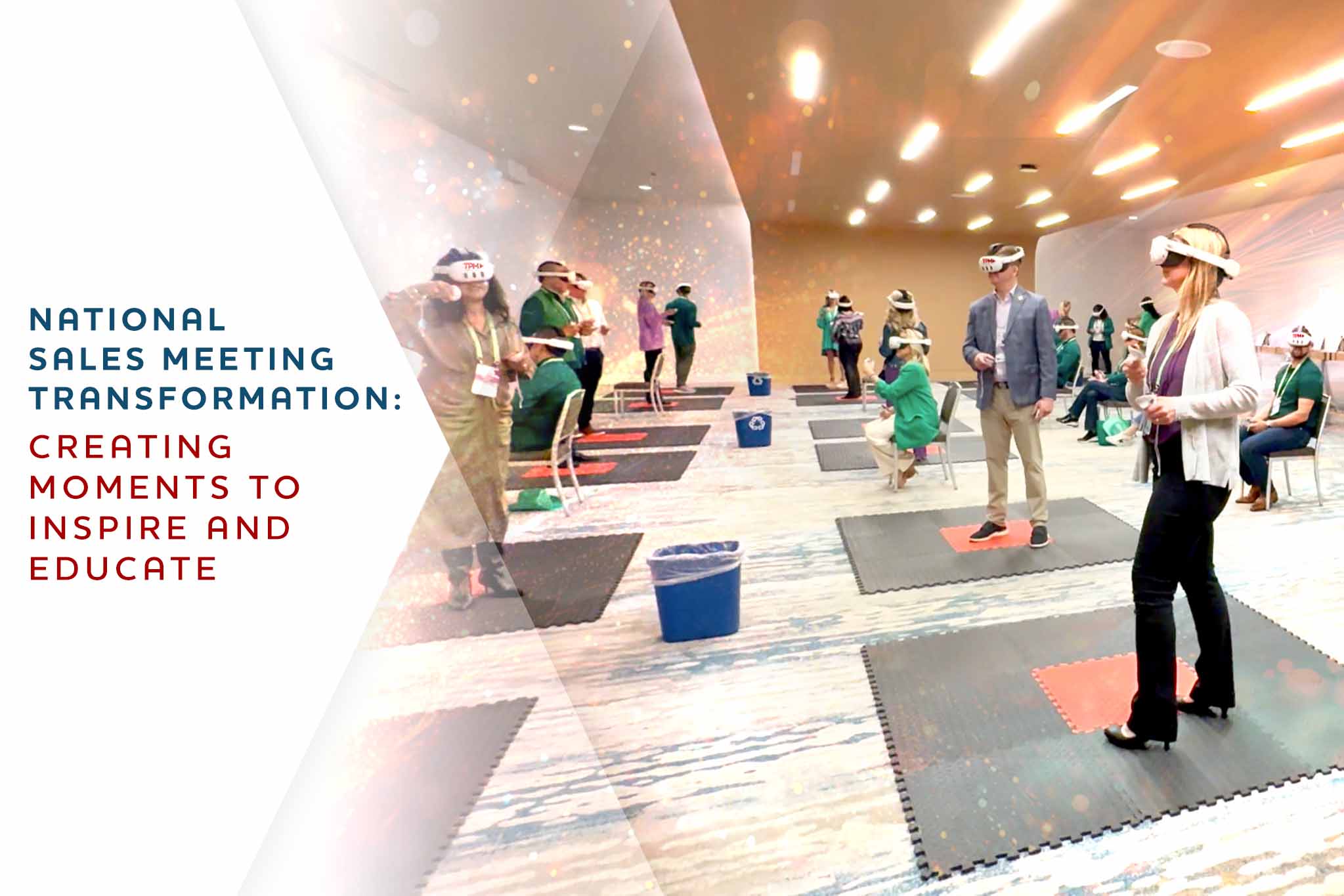The Evolution of Healthcare Education
The healthcare industry stands at a pivotal juncture in its approach to professional development and patient education. Traditional methods—static pamphlets, one-dimensional slideshows, and passive lectures—represent an outdated paradigm that fails to address the complex needs of modern medical practice and patient engagement. These conventional approaches, while providing basic information, have revealed significant shortcomings in preparing healthcare professionals (HCPs) and patients for today’s healthcare complexities.
The industry is rapidly embracing experiential learning methodologies, offering immersive, hands-on opportunities that strengthen confidence and decision-making skills while ensuring optimal care outcomes.¹ This transformation, powered by eXtended Reality (XR) technologies including Virtual Reality (VR), Augmented Reality (AR), and Mixed Reality (MR), has become essential for everyone involved in the healthcare journey.
The Limitations of Traditional Learning Methods
Healthcare environments demand precision and engagement from all participants, yet traditional learning modalities consistently fall short in delivering these outcomes. Research demonstrates that didactic lectures and printed materials frequently result in limited engagement and poor retention, creating substantial barriers for translating theoretical knowledge into practical skills.¹
For healthcare professionals, conventional approaches rarely provide the immersive, interactive experiences necessary for developing clinical judgment and procedural proficiency—skills that are critical in dynamic healthcare environments.² For patients, these methods often lead to struggles in understanding complex treatment regimens or properly implementing self-care practices.
Moreover, conventional methods typically lack:
- Realistic scenarios for practical application
- Immediate feedback mechanisms for correcting misunderstandings
- Engaging content that maintains attention and improves retention
- Personalized learning pathways that address individual needs
This gap between information delivery and practical application represents one of the most significant challenges in healthcare learning today.³
These limitations are directly addressed by providing immersive environments for learning complex medical content using eXtended Reality (XR) technologies. These technologies allow both healthcare providers and patients to practice procedures and decision-making without the financial, ethical, or supervisory constraints typical of traditional learning methods.⁴ ⁵
Understanding the Experiential Learning Approach
Experiential learning in healthcare represents a paradigm shift where knowledge and skills are acquired through active engagement, reflection, and real-world application. Developed by psychologist David Kolb, this approach emphasizes that effective learning occurs through a continuous cycle of experience, reflection, conceptualization, and experimentation.¹⁰
The experiential learning model places participants, whether clinicians or patients, at the center of dynamic learning environments where they’re challenged to make decisions and act in scenarios that mirror real-life situations.⁶ This stands in stark contrast to traditional didactic methods that prioritize passive information absorption over active engagement and critical thinking.⁷
Through immersive technologies like Virtual Reality (VR) and Augmented Reality (AR), experiential learning offers a dynamic platform for:
- Skill acquisition in realistic environments
- Decision-making enhancement under variable conditions
- Deeper understanding of healthcare processes and procedures
- Safe spaces for practice without patient risk
These technologies create environments where complex concepts become tangible and interactive, making them ideal for healthcare applications across the spectrum of learning needs.⁸
Experiential Learning’s Dual Impact in Healthcare
For Healthcare Professionals
For healthcare providers, experiential learning transforms education by integrating simulation-based scenarios, case-based practice, and real-time feedback into professional development. These immersive experiences place practitioners in realistic clinical situations where they can practice decision-making, collaborate with colleagues, and learn from mistakes without consequences to actual patients.
Virtual Reality (VR) technology enables healthcare professionals to:
- Practice complex surgical procedures before entering the operating room
- Work through difficult patient communication scenarios with AI-driven virtual patients
- Experience rare or high-risk cases that may be encountered infrequently in practice
- Receive objective performance metrics and personalized improvement recommendations
These VR experiences build both technical competence and the confidence needed for high-stakes medical environments, while AI algorithms further personalize training scenarios based on specific learning needs.
For Patients
For individuals navigating the healthcare system, experiential learning makes complex clinical information more accessible by breaking down medical processes into clear, digestible components. Instead of deciphering dense medical terminology from brochures, patients can use Augmented Reality (AR) applications that visually demonstrate proper medication administration or necessary self-care procedures.
This approach guides patients step-by-step through their care journey by:
- Translating medical jargon into understandable concepts
- Providing visual demonstrations of required self-care techniques
- Offering practice opportunities for important health management skills
- Building confidence in managing health conditions
AR tools overlay instructional content onto real-world objects, making abstract concepts concrete and actionable, resulting in improved adherence to treatment plans and better health outcomes.
Research consistently shows that traditional learning forms like pamphlets and lectures often fall short in areas such as skill acquisition and comprehension for both healthcare providers and patients. Learners in both groups can become disengaged, lack motivation, and struggle with translating theoretical knowledge into practical application, especially in complex medical scenarios.⁹
Future Trends in Healthcare Learning (2025 and Beyond)
The integration of eXtended Reality XR technologies is revolutionizing healthcare learning by creating highly authentic and interactive training environments for everyone involved in the care continuum.⁷ ¹⁰ These immersive platforms enable the generation and testing of innovative healthcare solutions through realistic simulations, thereby enhancing global health learning and training activities.¹¹
As healthcare continues to intersect with technology, several trends will shape learning experiences for both providers and patients in the coming decade:
AI-Driven Personalized Learning
AI-driven platforms are creating personalized learning scenarios based on specific needs, experience level, and learning style. These intelligent systems identify knowledge gaps and adapt content delivery to address unique challenges, whether for specialists seeking to master new surgical techniques or patients learning to manage chronic conditions.
Seamless Telehealth Integration
The boundaries between learning and care delivery continue to blur as experiential learning tools integrate with telehealth platforms. For healthcare providers, this means practicing telehealth consultations in simulated Virtual Reality (VR) environments. For patients, it involves remote learning sessions with virtual health coaches who provide real-time feedback on care procedures. VR creates immersive spaces where distance becomes irrelevant to effective knowledge transfer.
Simulation Systems Enhanced by eXtended Reality (XR)
Comprehensive feedback is increasingly provided by eXtended Reality (XR) simulations during both clinical training and patient self-management scenarios. For healthcare providers, these simulations monitor surgical technique in Virtual Reality (VR) and offer real-time guidance on optimal hand positioning and instrument usage. For patients managing chronic conditions, Augmented Reality (AR) simulations visualize the internal effects of medication adherence or demonstrate proper technique for self-administered treatments, providing immediate corrective guidance.
Adaptive Learning Pathways
Sophisticated assessment algorithms evaluate mastery of concepts or skills, whether clinical procedures for providers or self-care techniques for patients, and tailor subsequent learning experiences accordingly. This adaptive approach ensures that learning remains challenging without becoming overwhelming, maximizing retention and practical application.
Globally Standardized Training Platforms
Healthcare organizations worldwide are adopting standardized immersive learning tools to ensure consistency in training and patient education. This trend toward uniformity means that providers training in Boston or Bangkok, and patients receiving care in either location, have access to comparable educational experiences that reflect global best practices.
The trajectory is clear: experiential learning is becoming the central method through which healthcare knowledge is shared and applied across the healthcare spectrum. This evolution benefits everyone, from the newest medical student to the most experienced clinician, from the newly diagnosed patient to those managing lifelong conditions.
FAQs
Q1. What makes experiential learning more effective than traditional pamphlets and brochures for healthcare learning?
Experiential learning engages multiple senses through active participation, significantly improving retention compared to passive reading. It creates memorable experiences through interactive scenarios and immediate feedback, helping healthcare professionals develop clinical judgment and patients better understand treatments. Studies show this approach results in improved skill acquisition and better health outcomes compared to traditional one-way information transfer.
Q2. How can healthcare facilities implement eXtended Reality (XR) technologies with limited budgets?
Start with targeted pilot programs using mobile Augmented Reality (AR) applications on existing devices or subscription-based Virtual Reality (VR) platforms instead of purchasing hardware outright. Measure outcomes from small implementations to build business cases for expanded programs, and consider partnerships with academic institutions to share resources and research opportunities.
Q3. What first steps can healthcare organizations take to transition from pamphlets to eXtended Reality (XR) learning tools?
Begin with simple Augmented Reality (AR) applications that overlay digital information onto printed materials using existing smartphones or tablets, which serves as a cost-effective bridge between traditional pamphlets and fully immersive solutions. Start by identifying high-impact use cases like medication administration guidance or anatomical explanations where visual demonstrations significantly improve understanding. Create pilot programs with measurable outcomes before scaling to more complex Virtual Reality (VR) implementations that require specialized equipment.
Q4. How can experiential learning accommodate different learning styles and abilities among both patients and healthcare professionals?
Modern experiential learning platforms incorporate customizable difficulty levels and multiple sensory input options (visual, auditory, tactile) to accommodate different learning preferences. AI-driven systems can recognize individual struggles and offer additional support accordingly, while language options and cultural adaptations ensure accessibility across diverse populations.
Q5. What measurable outcomes can healthcare organizations expect after implementing experiential learning programs?
Organizations typically see reduced procedural errors among professionals (15-25%), improved medication adherence for patients (up to 30%), and significant cost savings through fewer complications. Most see initial results within 3-6 months, with substantial returns as programs mature through improved patient outcomes and higher staff retention.
References
- Cabero‐Almenara, J., De-La-Portilla-De-Juan, F., Barroso Osuna, J., & Palacios-Rodríguez, A. (2023). Technology-Enhanced Learning in Health Sciences: Improving the Motivation and Performance of Medical Students with Immersive Reality. Applied Sciences, 13(14), 8420. https://doi.org/10.3390/app13148420
- Cochrane, T., Aiello, S., Wilkinson, N., Aguayo, C., & Cook, S. W. (2022). Developing A Mobile Immersive Reality Framework For Enhanced Simulation Training: MESH360. ASCILITE Publications, 392. https://doi.org/10.14742/apubs.2019.294
- Curran, V., Xu, X., Yalin Aydin, M., & Meruvia-Pastor, O. (2022). Use of Extended Reality in Medical Education: An Integrative Review. Medical Science Educator, 33(1), 275. https://doi.org/10.1007/s40670-022-01698-4
- Fugate, J. M. B., Tonsager, M. J., & Macrine, S. L. (2025). Immersive Extended Reality (I-XR) in Medical and Nursing for Skill Competency and Knowledge Acquisition: A Systematic Review and Implications for Pedagogical Practices [Review of Immersive Extended Reality (I-XR) in Medical and Nursing for Skill Competency and Knowledge Acquisition: A Systematic Review and Implications for Pedagogical Practices]. Behavioral Sciences, 15(4), 468. Multidisciplinary Digital Publishing Institute. https://doi.org/10.3390/bs15040468
- Hansen, M. B., Nørup, I., Elmholdt, K. T., Kidholm, K., Nøhr, C., & Schmidt, T. (2019). Managing Change of EHR Systems. Research Portal Denmark. https://local.forskningsportal.dk/local/dki-cgi/ws/cris-link?src=aau&id=aau-b4ea4129-cd9c-4231-a77f-8d2ddbf42dd9&ti=Managing%20Change%20of%20EHR%20Systems
- Herur-Raman, A., D. Almeida, N., J. Greenleaf, W., Williams, D., Karshenas, A., & H. Sherman, J. (2021). Next-Generation Simulation—Integrating Extended Reality Technology Into Medical Education. Frontiers in Virtual Reality, 2. https://doi.org/10.3389/frvir.2021.693399
- Imbesi, L., Keppie, K., Vaes, K., Verlinden, J., Timmerman, K., Killi, S., Maffei, S., Bianchini, M., Campenhout, L. V., Hacigüzeller, P., Doubrovski, E. L., Casciani, D., & Chkanikova, O. (2023). Connectivity and creativity in times of conflict. In Academia Press eBooks. Academic Press. https://doi.org/10.26530/9789401496476
- Iqbal, A., Aamir, A., Hammad, A., Hafsa, H., Basit, A., Oduoye, M. O., Anis, M. W., Ahmed, S., Younus, M. I., & Jabeen, S. (2024). Immersive Technologies in Healthcare: An In-Depth Exploration of Virtual Reality and Augmented Reality in Enhancing Patient Care, Medical Education, and Training Paradigms [Review of Immersive Technologies in Healthcare: An In-Depth Exploration of Virtual Reality and Augmented Reality in Enhancing Patient Care, Medical Education, and Training Paradigms]. Journal of Primary Care & Community Health, 15. SAGE Publishing. https://doi.org/10.1177/21501319241293311
- Khalid, A. F., George, M., Eggen, C., Sritharan, A., Wali, F., & Viens, A. M. (2023). Using Simulation-Based Experiential Learning to Increase Students’ Ability to Analyze Increasingly Complex Global Health Challenges: A Mixed Methods Study. medRxiv (Cold Spring Harbor Laboratory). https://doi.org/10.1101/2023.12.19.23300262
- Kolb, A. Y., & Kolb, D. (2012). Experiential Learning Theory. In Springer eBooks (p. 1215). Springer Nature. https://doi.org/10.1007/978-1-4419-1428-6_227
- Lenoir, H., Pino, M., Dacunha, S., & Rigaud, A. (2022). Training of professional caregivers in the management of psychological and behavioural symptoms of patients suffering from neurocognitive pathologies through virtual reality: Feasibility study, caregiver satisfaction and training effectiveness. Research Square (Research Square). https://doi.org/10.21203/rs.3.rs-1728060/v1
![Experiential Learning for Patients and HCPs Beyond the Pamphlet [2025 Guide]](https://tipmedia.com/wp-content/uploads/2025/04/blogs_october_10-14_1 2.jpg)

